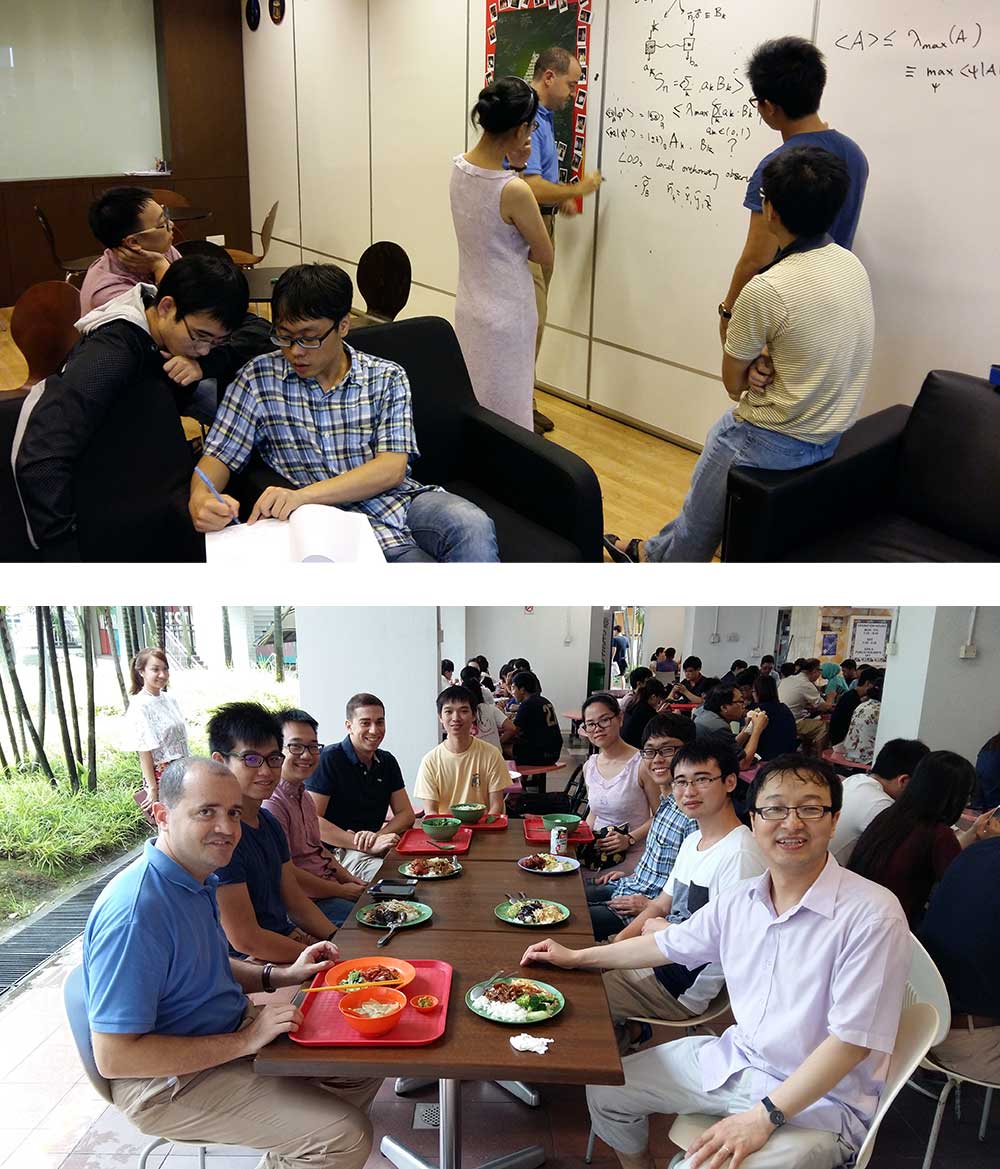Highlights
Games played at the quantum boundary

A collaboration that led to new observations of the quantum boundary began like this: conversations at the whiteboard and over lunch between Valerio Scarani's CQT group and visitors led by Kai Chen of the University of Science and Technology of China, Hefei.
There is something puzzling at the edge of quantum physics. CQT researchers and their collaborators in China have extended a six-year old result that identifies a point on the boundary of what nature allows. The new work could flip the community view on whether the result can apply to the boundary as a whole.
"Last year people thought some counterexamples had killed off the idea. We have brought it back again," says Valerio Scarani, a Principal Investigator at CQT and coauthor on the paper. The work was published 23 August in Physical Review A.
In 2010, researchers Stephanie Wehner and Jonathan Oppenheim reported a connection between two of the most striking phenomena in quantum physics: nonlocality, as manifested in entanglement, and quantum uncertainty relations.
Stephanie, now at QuTech at the Technical University of Delft, was then a Principle Investigator at CQT; Jonathan is at University College London. The result was published in Science.
Boundary conditions
It was an attention-grabbing finding. The excitement came not only from the new connection, but also the fact that it characterised a point on the boundary of quantum correlations.
Physicists are interested in the boundary because they don't yet have a good idea of why it is located where it is. It is possible to imagine particles being more strongly entangled than quantum physics allows, but that doesn't happen. The intriguing hope of physicists working in this area is that there's an as-yet undiscovered principle to explain it.
Imagine quantum physics being an island, where the mathematical theory can draw the coastline. The problem is that scientists don't yet know what's really different between the land and the ocean. The quantum problem is complicated by the fact the map has at least 16 dimensions.
The Science paper dealt with a specific point on the boundary, the one that maximally violates the famous CHSH Bell inequality. A preprint posted in 2015 tried the Oppenheim-Wehner approach with other inequalities and reported that they did not work. This seemed a final blow to hopes of gaining deep insight into the boundary with this method.
Now Valerio with his students Koon Tong Goh and Xingyao Wu and their collaborators from the University of Science and Technology of China, Hefei, have countered the counterexamples. What's more, they have found new sets of boundary points that fit with the Oppenheim-Wehner idea, even finding an example for an inequality that involves three particles.
The paper with the counterexamples was a "smart step", says Valerio. It defined a mathematical framework that helped his group forward, after they began working on the project.
The deep why
The collaboration started when three of the Chinese coauthors visited CQT in May 2015, proposing to work on steering. What the team found is that it's not enough to check the Oppenheim-Wehner criterion for just one inequality at a boundary point. An inequality that defines the same point in a different way may work. In other types of research, the inequalities would be considered equivalent.
The discovery reopens the possibility that the Oppenheim–Wehner games may tell us something fundamental about the quantum boundary, but there's a lot that's still unclear. Valerio says "we do not understand the deep why" of there being a difference between supposedly equivalent inequalities, where the equivalence is rooted in the no-signaling principle. That principle holds that no information can travel faster than light. In the new scenarios, the relation to uncertainty is also muddied. What can be learnt from digging into these topics? The research continues.
Learn more
- Paper: "Nonlocal games and optimal steering at the boundary of the quantum set" Physical Review A 94, 022116 (2016); arXiv:1602.06048
- People at CQT: Koon Tong Goh, Xingyao Wu, Valerio Scarani
- People elsewhere: Yi-Zheng Zhen, Yu-Lin Zheng, Wen-Fei Cao, Kai Chen
- Related stories: CQT researcher uncovers surprise link between weird quantum phenomena (November 2010)






